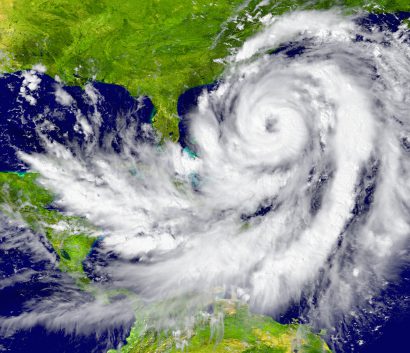At A Glance: CDC/ATSDR Social Vulnerability Index
Natural disasters and infectious disease outbreaks can pose a threat to a community’s health. Socially vulnerable populations are especially at risk during public health emergencies because of factors like socioeconomic status, household characteristics, racial and ethnic minority status, or housing type and transportation. To help public health officials and emergency response planners meet the needs of socially vulnerable populations in emergency response and recovery efforts, the Geospatial Research, Analysis, and Services Program (GRASP) created and maintains the CDC/ATSDR Social Vulnerability Index (CDC/ATSDR SVI).
| Interested? Check out the CDC/ATSDR SVI Interactive Map. | |
|
|
Public Health Impact: The CDC/ATSDR SVI helps public health officials and emergency response planners meet the needs of socially vulnerable populations in emergency response and recovery efforts.
Partner(s): GRASP created and maintains the CDC/ATSDR SVI.
Geospatial Expertise Provided: Geographic information systems (GIS), geospatial science, geospatial statistics, and data visualization. |
| For more information, please contact the CDC/ATSDR SVI Coordinator (svi_coordinator@cdc.gov). |
CDC/ATSDR Social Vulnerability Index
The CDC/ATSDR SVI is a database that helps emergency response planners and public health officials identify, map, and plan support for communities that will most likely need support before, during, and after a public health emergency. The tool is commonly used across CDC/ATSDR, in addition to many emergency preparedness and response organizations. Users may download the CDC/ATSDR SVI databases, documentation, and data dictionary from CDC SVI website and OneMap for the feature layer and for the map image layer.
GRASP Provides Expertise to Meet the Needs of Socially Vulnerable Populations
Since 2003, CDC/ATSDR has become more involved in supporting public health emergencies. The Agency relies on GRASP to provide expertise in geographic information systems (GIS), geospatial science, geospatial statistics, and data visualization to support response and recovery efforts. GRASP created the first version of the SVI in 2011 to enable the public health community to quickly and precisely identify and plan assistance for socially vulnerable populations over the entire course of hazardous events.
To prepare the CDC/ATSDR SVI, GRASP downloads US Census data and links key variables in a way that makes the SVI easier for users to understand and visualize different combinations of social factors that can increase a community’s social vulnerability risk. Every two years, GRASP updates the CDC/ATSDR SVI and creates approximately 3,400 updated CDC/ATSDR SVI maps to help states and communities identify at-risk groups in times of crisis. GRASP continuously evaluates the data and uses geospatial statistics to determine if additional social vulnerability variables are needed to improve the tool.
The CDC/ATSDR SVI is constantly evolving to keep pace with advancing technology and to address community needs. The methods, databases, and maps are designed to be easy-to-understand and use. GRASP continuously gathers user feedback to ensure that the CDC/ATSDR SVI is easily accessible, regardless of the resources or training of its users.
Protecting Socially Vulnerable Communities in Public Health Emergencies
The CDC/ATSDR SVI databases and maps can help communities prepare for and recover from public health emergencies, and prevent adverse effects among socially vulnerable populations, such as emotional distress, loss of property, illness, and death.
- Emergency planners use the CDC/ATSDR SVI to decide the number of emergency personnel needed, plan the best way to evacuate people, and account for socially vulnerable populations.
- Public health officials use the CDC/ATSDR SVI to identify areas in need of emergency shelters and estimate the amount of supplies needed.
- State and local health departments and non-profits use the CDC/ATSDR SVI to guide community-based health promotion initiatives.
The CDC/ATSDR SVI’s accessibility makes it easy for scientists and planners to modify the data based on their needs and local knowledge, and its flexibility makes it useful in all four phases of the disaster cycle—preparedness, response, recovery, and mitigation.
If you have a success story about CDC SVI, please share it with us! Email the CDC/ATSDR SVI Coordinator.
Learn more about the history of GRASP.
Social Vulnerability refers to the resilience of communities (the ability to survive and thrive) when confronted by external stresses on human health, stresses such as natural or human-caused disasters, or disease outbreaks. Reducing social vulnerability can decrease both human suffering and economic loss.
Socially Vulnerable Populations include those who have special needs, such as, but not limited to, people without vehicles, people with disabilities, older adults, and people with limited English proficiency.
Census tracts are subdivisions of counties for which the Census collects statistical data. The CDC/ATSDR SVI ranks each tract on 16 social factors, including poverty, lack of vehicle access, and crowded housing, and groups them into four related themes. Each tract receives a separate ranking for each of the four themes, as well as an overall ranking.
Data Sources: U.S. Census
CDC/ATSDR SVI Themes & Social Factors:
- Socioeconomic status (below 150% poverty, unemployed, housing cost burden, no high school diploma, no health insurance)
- Household characteristics (aged 65 or older, aged 17 or younger, civilian with a disability, single-parent households, English language proficiency)
- Racial and ethnic minority status (Hispanic or Latino (of any race); Black and African American, Not Hispanic or Latino; American Indian and Alaska Native, Not Hispanic or Latino; Asian, Not Hispanic or Latino; Native Hawaiian and Other Pacific Islander, Not Hispanic or Latino; Two or More Races, Not Hispanic or Latino; Other Races, Not Hispanic or Latino)
- Housing type & transportation (multi-unit structures, mobile homes, crowding, no vehicle, group quarters)
187,010
Highest number of CDC/ATSDR SVI views (during April 2020)
3,141
Number of maps GRASP creates every 2 years for CDC/ATSDR SVI
16
Number of U.S. Census variables at tract level to help identify at risk communities
